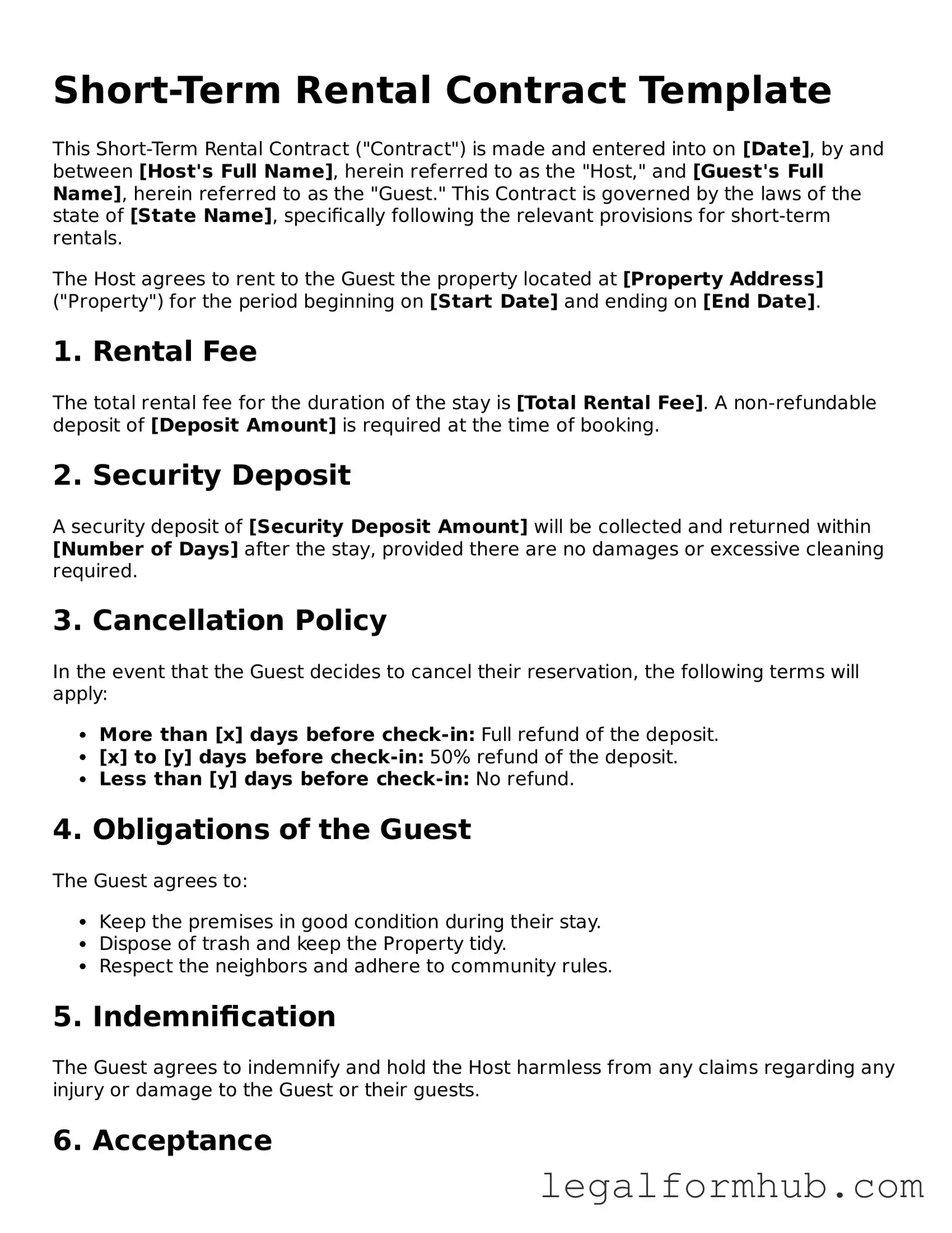The Lease Agreement is a foundational document in real estate that outlines the terms between a landlord and a tenant. Like the Short-Term Rental Contract, it specifies the duration of occupancy, rental amount, and responsibilities of both parties. However, the Lease Agreement typically covers a longer duration, often a year or more, while the Short-Term Rental Contract is designed for brief stays. Both documents serve to protect the interests of the parties involved and establish clear expectations regarding property use.
The Rental Application is another document that shares similarities with the Short-Term Rental Contract. It is used to collect essential information from potential tenants, such as their employment history, rental history, and references. While the Short-Term Rental Contract formalizes the agreement after a tenant has been selected, the Rental Application serves as a preliminary step in the leasing process. Both documents aim to ensure that the landlord makes informed decisions about who will occupy the property.
The Security Deposit Agreement often accompanies rental contracts, including the Short-Term Rental Contract. This document outlines the terms under which a security deposit is collected, held, and returned. It details the conditions that could lead to deductions from the deposit, such as damages or unpaid rent. Similar to the Short-Term Rental Contract, it aims to protect the property owner’s investment while providing clarity to the tenant about their financial obligations.
The House Rules document is essential for short-term rentals, setting expectations for guests during their stay. This document complements the Short-Term Rental Contract by detailing specific guidelines regarding the use of the property, noise levels, and other behavioral expectations. While the Short-Term Rental Contract establishes the legal agreement between the host and the guest, the House Rules provide practical instructions for maintaining a harmonious environment.
To navigate the complexities of rental agreements, it is essential to utilize comprehensive forms tailored to specific scenarios, such as the Fill PDF Forms that help establish clarity and protection for both landlords and tenants. These forms can facilitate a smoother rental process, ensuring that all critical details are documented and understood by both parties.
The Property Inventory Checklist is another useful document that aligns with the Short-Term Rental Contract. It provides a detailed list of items and conditions of the property before a guest arrives. This checklist helps both the host and the guest assess the state of the property at check-in and check-out. Similar to the Short-Term Rental Contract, it serves to prevent disputes regarding damages or missing items, ensuring a smoother rental experience for both parties.
